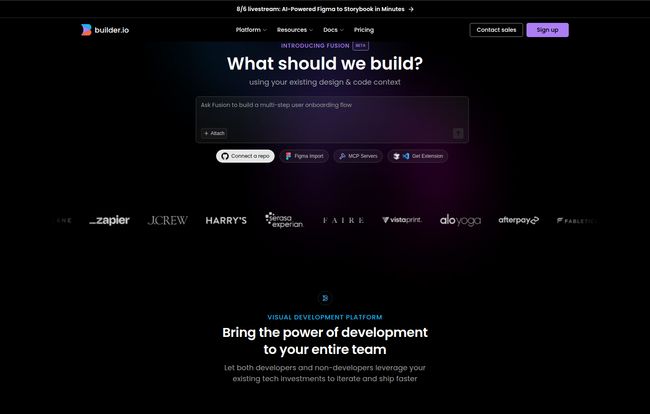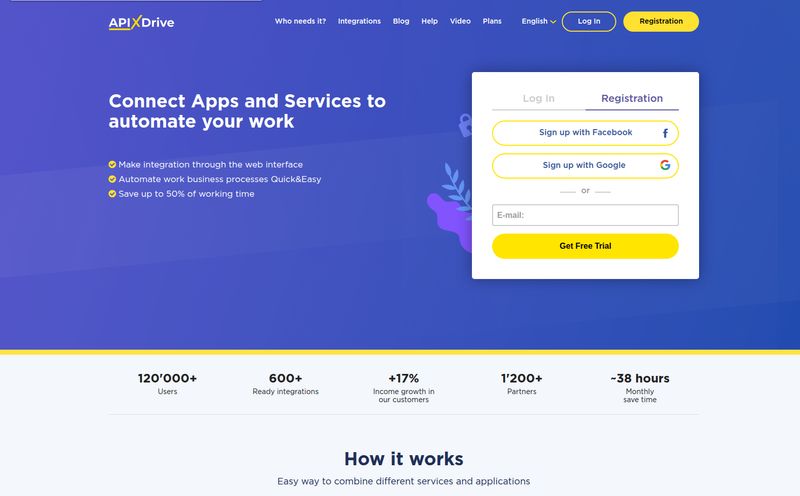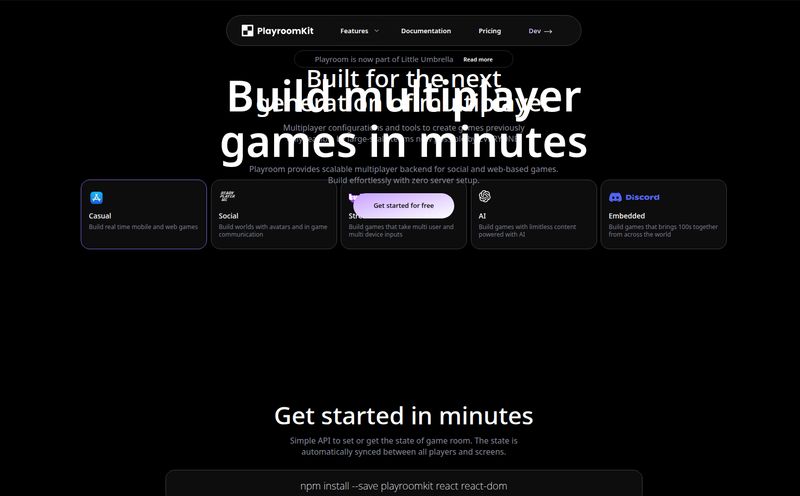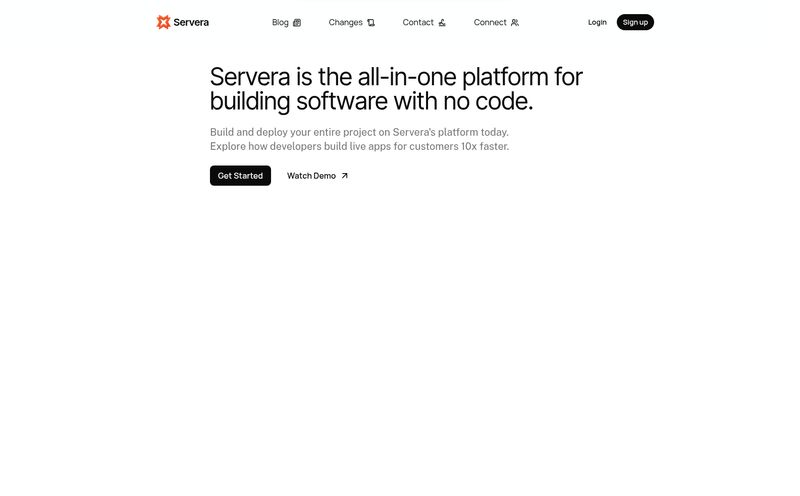Let me tell you a story. It's a story every SEO, marketer, or product manager knows by heart. You've got a brilliant idea for a new landing page. The copy is perfect. The design is a masterpiece, a Figma file so beautiful it could make a grown developer weep. You hand it off to engineering with a hopeful smile, and they say, “Great! It’s in the backlog. We should get to it in… six weeks.”
Six. Weeks. The sound of momentum dying. We’ve all been there, stuck in that painful limbo between idea and execution, a space I lovingly call the “dev bottleneck.” It’s a place filled with Jira tickets, priority meetings, and the slow, crushing realization that your brilliant campaign will launch a month late.
So when a tool like Builder.io comes along, claiming it can bridge this gap and let your entire team build and ship, my inner skeptic raises an eyebrow. But my inner, overworked marketer leans in, whispering, “...tell me more.” I’ve spent some serious time with the platform, and I have… thoughts. Lots of them.
What on Earth is Builder.io, Anyway?
First off, let's clear up what this thing isn't. It's not another Wix or Squarespace. It's not just a page builder, and its not just a headless CMS, though it does both of those things. Builder.io calls itself a “Visual Development Platform.” In human terms, I’d call it a universal translator for your web team.
Imagine your website's front-end is a giant, complex Lego castle. Your developers painstakingly created all the custom bricks: the branded buttons, the hero banners, the product cards. Historically, only the developers (the Master Builders, if you will) could assemble these bricks into new things. Builder.io gives a visual interface to everyone else on the team, letting them grab those pre-approved Lego bricks and build new pages, all without needing to know how the bricks were made. And with its new AI features, it can even look at a picture of a new castle and try to build it for you using the bricks you already have.
It’s really two core products bundled together: Fusion, the AI-powered side that turns designs into code, and Publish, the visual editor and headless CMS for ongoing content management.
The Magic Wand: AI-Powered Figma to Code
This is the feature that gets all the attention. The promise of converting a Figma design directly into clean, production-ready code. I’ll be honest, the entire industry has been burned by “design-to-code” tools for years. They usually spit out a tangled mess of absolute-positioned divs that make any seasoned developer want to throw their laptop out a window.
My First Impression of Fusion AI
My first thought was, “Yeah, right.” But Builder.io does something fundamentally different that caught my attention. It doesn’t just generate random code. Instead, you can teach it to recognize your existing components. So when it sees a design, it doesn't just create a new button from scratch; it says, “Ah, that looks like their ‘PrimaryCallToAction’ component,” and uses your actual code from your repository. That, my friends, is a game-changer.

Visit Builder.io
How It Actually Works
The workflow is surprisingly smooth. You give the AI a link to your Figma design or even just a URL. It analyzes the layout, structure, and styling. Then, it generates the code in your framework of choice—React, Vue, Qwik, Svelte, you name it. The real magic is when it’s connected to your codebase. It maps the design to your components, which means the output is not only clean but also consistent with your established design system. It drastically cuts down on that initial, tedious grunt work of turning a static design into a functional skeleton.
Beyond the AI: The Visual Editor and Headless CMS
While the AI is flashy, the day-to-day power for a marketing team lies in the “Publish” side of Builder.io. This is where the platform really starts to solve that six-week-wait problem.
Finally Empowering Your Marketing Team
Once a page or template is built, your non-technical teams can just… go in and use it. They can drag-and-drop components, rewrite headlines, swap out images, and publish changes in real-time. Want to run an A/B test on a headline? You don't need a developer. Need to launch a new promo banner for a flash sale? You can do it yourself in minutes. This is true agility. It’s about letting marketers market and developers develop, instead of forcing developers to become glorified content updaters.
A Headless CMS That Developers Don’t Hate?
I’ve worked with a lot of CMS platforms, and developers usually tolerate them at best. Many traditional systems are clunky and force you into their way of doing things. Builder.io, on the other hand, is API-first. It's a proper headless CMS that plays nicely with modern tech stacks. Developers can define the content models and data structures, and the content is delivered via API to any front-end they want. It has the structure that developers need, with the visual flexibility that marketers crave. It’s a balance I haven’t seen many platforms strike as well as this one, putting it in conversation with giants like Contentful but with a much more integrated visual editing experience.
Let's Talk Money: A Look at Builder.io's Pricing
So, what's all this power going to cost you? The pricing structure is actually pretty accommodating, depending on your team's size and needs. They've broken it down into a few main tiers, which is nice to see.
| Plan | Price | Who It's For | Key Features |
|---|---|---|---|
| Free | $0/month | Individuals & small projects just exploring. | Up to 10 users, 25 monthly AI credits. A great way to test the waters. |
| Pro | $24/user/month | Professional teams actively building and iterating. | Up to 20 users, 100 monthly AI credits, 30-day activity history. |
| Enterprise | Custom | Large organizations needing serious scale, security, and support. | Custom everything: users, credits, SSO, dedicated support, SLAs. |
The free plan is genuinely useful for getting a feel for the platform. The Pro plan feels reasonably priced for the value it offers a small or medium-sized business. The Enterprise plan is where you get all the security and support features big companies need, and as you'd expect, the price is a “contact us” situation.
The Good, The Bad, and The... Complicated
No tool is perfect. After spending time with Builder.io, here’s my honest breakdown of the highs and the lows.
What I Genuinely Like
The speed is undeniable. The claim of a “20% increase in development capacity” I saw on their site doesn't feel like marketing fluff. By offloading content updates and simple page builds from engineering, you free them up to work on the hard problems. I’ve seen the relief on a dev team’s face when they realize their sprint won’t be derailed by three “urgent” copy changes from marketing. That alone is almost worth the price of admission. It empowers the rest of the team in a way that’s tangible and, frankly, great for morale.
Where I'd Urge a Little Caution
Okay, let's be real. There is a learning curve here. You can’t just sign up and expect it to magically integrate with your complex, decade-old codebase. The initial setup requires developer involvement to connect your components and configure everything correctly. Secondly, you are building on their platform. This is a strategic decision. If Builder.io were to disappear tomorrow, you'd have some untangling to do. It’s a calculated risk, a classic case of trading some control for a lot of speed and convenience. And for the Enterprise plan, the cost can be a factor, requiring you to make a strong business case to your CFO.
So, Who is Builder.io Actually For?
If you’re a solo blogger running a simple WordPress site, this ain’t it. You’d be bringing a bazooka to a knife fight. But if you’re a scaling e-commerce company, a SaaS business with a rapidly changing website, or a large enterprise with distinct marketing and engineering departments that are constantly out of sync, Builder.io could be a revelation. It’s for teams that feel the pain of the dev bottleneck on a daily basis and are willing to invest in a solution that changes their entire workflow for the better. The presence of brands like J.Crew and Vistaprint on their homepage tells you the kind of scale they're built to handle.
My Final Verdict: Is It Worth the Hype?
I came into this review a seasoned skeptic, and I'm walking away genuinely impressed. Builder.io isn't a magic bullet that will solve all your problems, but it tackles one of the most persistent and expensive problems in modern web development: the operational friction between teams. The AI-powered design-to-code is more than a gimmick; it’s a legitimate accelerator, especially because of its ability to use your components. The visual editor is one of the best I've seen for a headless architecture.
It represents a shift in thinking—from siloed teams to collaborative creation. It’s a tool that requires some upfront investment in setup and process change, but the payoff in speed, agility, and team harmony could be immense. For the right company, Builder.io isn’t just a cool new tool; it feels like a glimpse of the future.
Frequently Asked Questions about Builder.io
- Can Builder.io completely replace my developers?
- Absolutely not. It's designed to empower your developers, not replace them. You need developers to build the core components, set up the initial integration, and work on complex features. Builder.io just stops them from having to do repetitive, low-value tasks like updating a homepage headline.
- What frameworks does Builder.io support?
- It supports a wide range of modern frameworks. The most popular ones are React, Vue, Qwik, Svelte, Solid, and standard HTML/CSS. Their goal is to be framework-agnostic.
- Is Builder.io only for large enterprise companies?
- Not at all. While they have a powerful enterprise offering, the Free and Pro plans are specifically designed for individuals, startups, and small-to-medium-sized teams to get started and see real value.
- How good is the AI-generated code, really?
- It’s surprisingly good, especially when you've mapped it to your own component library. Because it leverages your existing, developer-approved code, the output is much cleaner and more maintainable than older-generation tools. It gives you a fantastic head start.
- What is the difference between Builder.io and something like Webflow?
- This is a great question. The key difference is that Webflow is a self-contained platform; you build in Webflow, and it hosts everything. Builder.io integrates with your existing website and codebase. It's a layer on top of your tech stack, not a replacement for it. This makes it ideal for established companies that can't just migrate to a whole new platform.
- Is there a free trial for Builder.io?
- Yes, they have a perpetually free plan that is very generous. It includes up to 10 users and 25 AI credits per month, so you can fully explore the platform's capabilities before committing to a paid plan.
Reference and Sources
- Builder.io Official Website
- Builder.io Official Pricing Page
- A Complete Guide To Headless CMS (Smashing Magazine)



